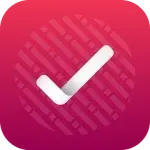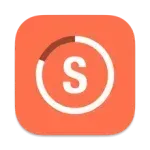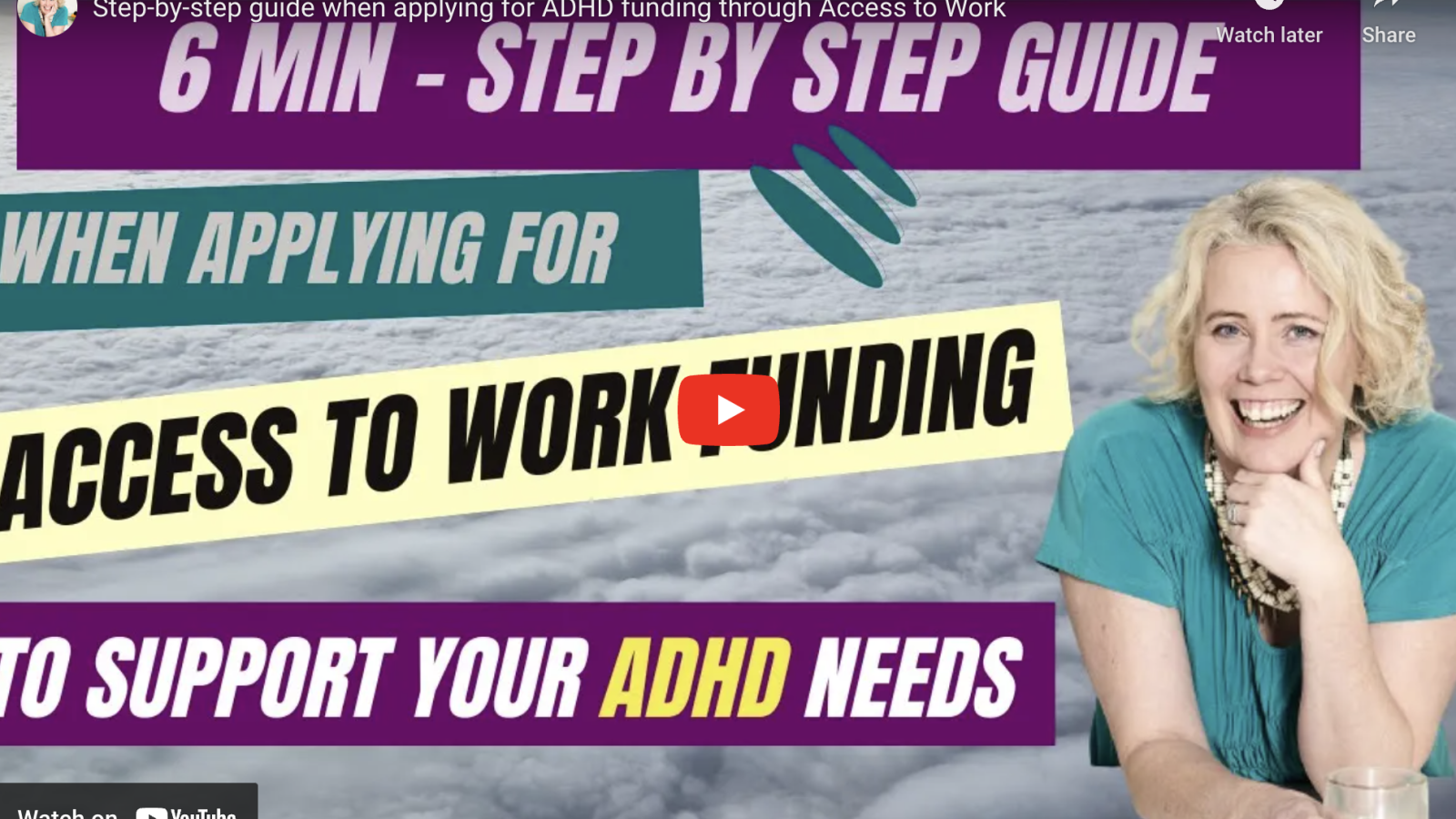In response to my post last week about habit trackers and what they are good for, I’ve received a lot of requests for what I would recommend. I am also often asked this by my coaching clients , and essentially it comes down to what you want to track and what your personal requirements and preferences are.
Identify Your Goals and Preferences
Knowing a bit about your goals and preferences will help you select a habit tracking system that aligns with your objectives. Use this article to consider what you need.
The first step to finding the right habit tracker is to understand what you want to accomplish. DO NOT go down that rabbit hole without setting some parameters for what you are looking for, especially if you are neurodivergent. There are many habit tracking service providers, and they are all good at selling the benefits of their product, so the most important thing is to know if you’re interested in the benefits they’re offering.
Consider the habits you want to monitor. These might include:
- Positive habits: Water intake, journal writing, exercise
- Habits to reduce: Alcohol consumption, excessive screen time
Habit tracking can be helpful if, for example, you suffer from time blindness. I am always surprised by how often my head says I haven’t done journaling ‘for ages’ for example and then I check my habit tracker and find out I only wrote something two days ago. Sometimes combating time blindness is about allowing your brain to acknowledge that you do things. Again super important if you are neurodivergent.
Other key questions you might want to ask yourself are:
- Do you want to improve your fitness, enhance your productivity, or manage your time more effectively?
- Is simplicity more important to you than gamification?
- Are you a fan of good old fashioned paper and pen or do you have an iPhone or Android that you would like to use?
- How important is it for your tracker to sync with your laptop or your tablet?
Below are some areas to consider when considering your own personal preferences. Some of them may not apply to you, but some might help you figure out what you want from a habit tracker so that you can get one that does the job. In addition to some suggestions, I’ve included some criteria I use myself.
1. Ease of Use
In my experience, a habit tracker should be intuitive and straightforward to use. Overly complex interfaces can be discouraging and often lead to inconsistent usage. If I can’t figure out how to use it effectively within a short period, it’s likely not the right fit for me. I’m not inclined to spend time reading manuals or watching lengthy tutorials just to learn how to use a habit tracker.
It’s worth considering the traditional pen and paper approach as well. If you prefer working with physical materials, this could be an excellent option for habit tracking. There are downloadable templates available, and for those who appreciate quality stationery, there are some lovely options to purchase. (I can practically see your neurodiverse brains lighting up at the thought of getting more stationary)
The visual appeal and user experience are important factors to consider. It’s not solely about functionality. Take note of what attracts you and trust your instincts when making your choice.
2. Customisation Options
Maybe customisation is important to you if so look for a habit tracker that offers this. Whether it’s adjusting the layout, adding custom fields, or changing colours, customisation can make the tracker more personal and engaging.
My customisation ‘must have’ is around notifications. I want some but not all and I need them at certain times therefore that is what I look for.
I also need my habit tracker to allow me to add some context. My ADHD brain easily forgets why it was a good idea to ‘move every day’ so I want the ability to add a description that also comes up on my overview page which is great.
3. Gamification
By definition, habit trackers are gamification, and they typically measure results and show how you are doing, but some apps take gamification a step further. While this isn’t a personal requirement for me, it is the driving force behind some of my clients sticking to their habits and their habit tracking system, so it should be appreciated.
If you like winning virtual currency, characters that progress or the ability to create your own rewards, then find an app that uses gamification.
If a system or app prioritises simplicity, it may be easier to use. A simple system reduces the cognitive effort required to use it, which sometimes makes it more accessible and less overwhelming. This might also make it easier to maintain consistency.
4. Simplicity
Having a simple and straightforward interface allows for less distractions, since there are fewer features and less visual clutter, which can help maintain focus on the main task of tracking the habit.
5. Integration with Other Tools
Consider a habit tracker that integrates seamlessly with other tools you use. This can streamline your workflow and ensure all your data is in one place. For instance you might want it to pick up your exercise data directly from your smartwatch.
In my experience, habit trackers with a long history, many downloads and may have paid features tend to be the best at integration. It makes sense because they can invest in integrations and add-ons, so if this is what you are looking for, then choose the more established habit trackers.
6. Work and sync across platforms and devices
One crucial feature I’ve come to value in a habit tracker is its ability to function seamlessly across all my devices – my laptop, phone, and tablet – with reliable syncing. I’ve discovered through experience that if a tracker doesn’t offer this functionality, I’m far less likely to use it consistently.
Having a habit tracker that’s accessible on various devices, ensures you can keep tabs on your habits wherever you are. Having cross-platform consistency does more than just offer convenience; it can significantly reduce the mental effort required when switching between different systems, which is particularly beneficial for those of us who find transitions challenging.
This also means you can access your tracker when you need it, accommodating different processing styles. Personally, I appreciate the flexibility to switch between typing, handwriting, and voice input across my various devices.
7. Reporting and Analytics
Most habit trackers offer some form of reporting as a key feature. These reports and analytics can provide valuable insights into your progress and help you spot patterns in your behaviour.
Typically, habit tracking apps use a binary system: you either maintain your streak or break it. Whilst this approach can be brilliant for establishing new habits, some might find it a bit too rigid. Personally, I prefer apps that offer a ‘skip’ option, allowing you to log the day without breaking your streak. This flexibility can be particularly helpful for those of us who need a bit more grace in our habit-forming journey.
One aspect I find lacking in all the habit trackers I’ve tried thus far is comprehensive graphs and statistics. There seems to be an obsession with tracking consecutive days, but what I’m really after is the ability to see my completion percentage over a given period. For instance, if I aim to complete a task 5 out of 7 days a week, I’d like to see a 100% completion rate when I hit that target, rather than being penalised for the two ‘off’ days.
If anyone knows of a habit tracker (particularly for Android) that offers this level of detailed analytics, I’d be keen to hear about it. Alternatively, if there are any app developers out there interested in creating a neurodiversity-friendly habit tracker with these features,
I’d be delighted to discuss it further.
Habit Tracking Apps and Methods
I have included some suggestions of apps for some categories. These are just examples of apps that you might want to consider but it’s not me endorsing or even recommending that particular app. I believe that it’s all very personal and therefore there is no ‘one’ thing that is better than anything else. It’s simply what might suit you.
Free vs paid solutions:
There are free and paid apps available at varying price points. I’ve come to appreciate good apps, software, systems, etc. over the years and personally, I think paying for a good app is worth it if it works for you. However, I understand that we are not all in the same boat and this may not always be an option. My understanding of myself has made it easier for me to pay for things because I have the confidence and understanding to know how it is going to make a difference in my life, so I also hope that this article will be helpful to you in that same way.
In no particular order:

Tusk – (IOS & Android) this is what I use. The best thing about it is that it lets me skip tasks, create sprints (e.g. a habit with a start and end date), and add context to my tasks so I don’t forget why I wanted to accomplish them. I can use it across all my platforms as well.

Notion (IOS & Android) is not exclusively a habit tracker but you can set it up to work that way and you can customise it however you like. If customisation is your jam, you can do almost anything here.

HabitNow (Android) Good for data, it’s a mainstream app that’s been around for a long time.

Habitify (IOS & Android) This works across platforms and is rated for being simple and straightforward to use. I have used it and I liked that it connects with other apps but it is a paid app. integration

Fabulous (IOS & Android) This one is marketed as a ‘Daily Routine Planner’ and talks about catering specifically for neurodiversity and has many wellbeing features built in.

Loop (Android) Good overview of statistics and rated for simple and clear design

Habitica (IOS & Android) This is an app for those who value gamification. You create an avatar, receive gold and items that can be used in the game.

Habits garden (IOS & Android) A tracker that uses gamification to support building of habits. You grow gardens, have communal leaderboards with other users. another one for gamification

Way of Life (IOS & Android) – This app is rated for it’s analytics and reporting. It synchronises across devices and has a simple interface.

Streaks (IOS) syncs across devices, share tasks with family and friends for accountability. Automatically syncs to health app. Simple interface.
Habit Tracker (IOS) Simple layout and integration with apple health for some automated tracking. Add extra accountability by working with friends. Syncs across devices and allows customisation.

Productive (IOS) You can add notes to habits, create sprints (i.e. stop and starts) customise visually what it looks like and customise notifications. It also talks about ADHD assistance but I’m not sure what that looks like.

Daily Habits (IOS) This is one I would like to try but it’s only available on IOS and I’m android 🙁 . You can organise your habits and you can also get others onboard to create accountability with family and friends.
Don’t underestimate the power of Trial and Error
If all of this criteria seems overwhelming and you’re thinking ‘I don’t know what I need or want’ sometimes, the best way to find the right habit tracker is through trial and error. Many habit trackers offer free trials or basic versions. Use these to test different features and see which one fits best with your routine and preferences.
Neurodiversity consideration:
Word of caution: I’m sure that all of this talk of habit trackers is quite exciting and often our brains like the idea of the habit tracker because of what it’s going to provide, change or shift for you. It’s often the idea that our brains light up about and spike our dopamine levels. So try and choose a tracker and a system that is essentially going to help you complete the habit or goal that you are ultimately looking for. You are likely to love your tracker in the beginning whatever you choose but the measure of whether it’s the right tracker for you is probably in the long game. However don’t just assume it’s the tracker that needs to change it might be that you just need to go back to using it.
I would also be careful with apps that rely heavily on success being measured by doing things consistently everyday and if you miss a day it sends you a negative message or you get a big red mark on your dashboard. We don’t need that in our lives and I’m telling you now that even with the best intentions you will miss a day or week for various reasons. Set yourself up for winning and choose a tracker that uses positive language. This also goes for when you are setting up your goals especially if you are tracking a ‘negative habit’ like not drinking alcohol have it say ‘Alcohol Free’ rather than ‘no alcohol’. Language is always important.
Conclusion
Finding the best habit tracker involves understanding your goals, ensuring ease of use, looking for customisation options, integrating with other tools, utilising visual cues, accessing detailed reports, and ensuring mobile accessibility. By considering these factors, you can choose a habit tracker that will help you stay on track and achieve your goals.
There will be lots of specific apps not mentioned so if you have tried something that you like please add it to the comments with a note saying why you like it to help others determine whether they might want to check it out.
Remember, the best habit tracker is the one that you will consistently use and that seamlessly fits into your lifestyle. Happy tracking!





